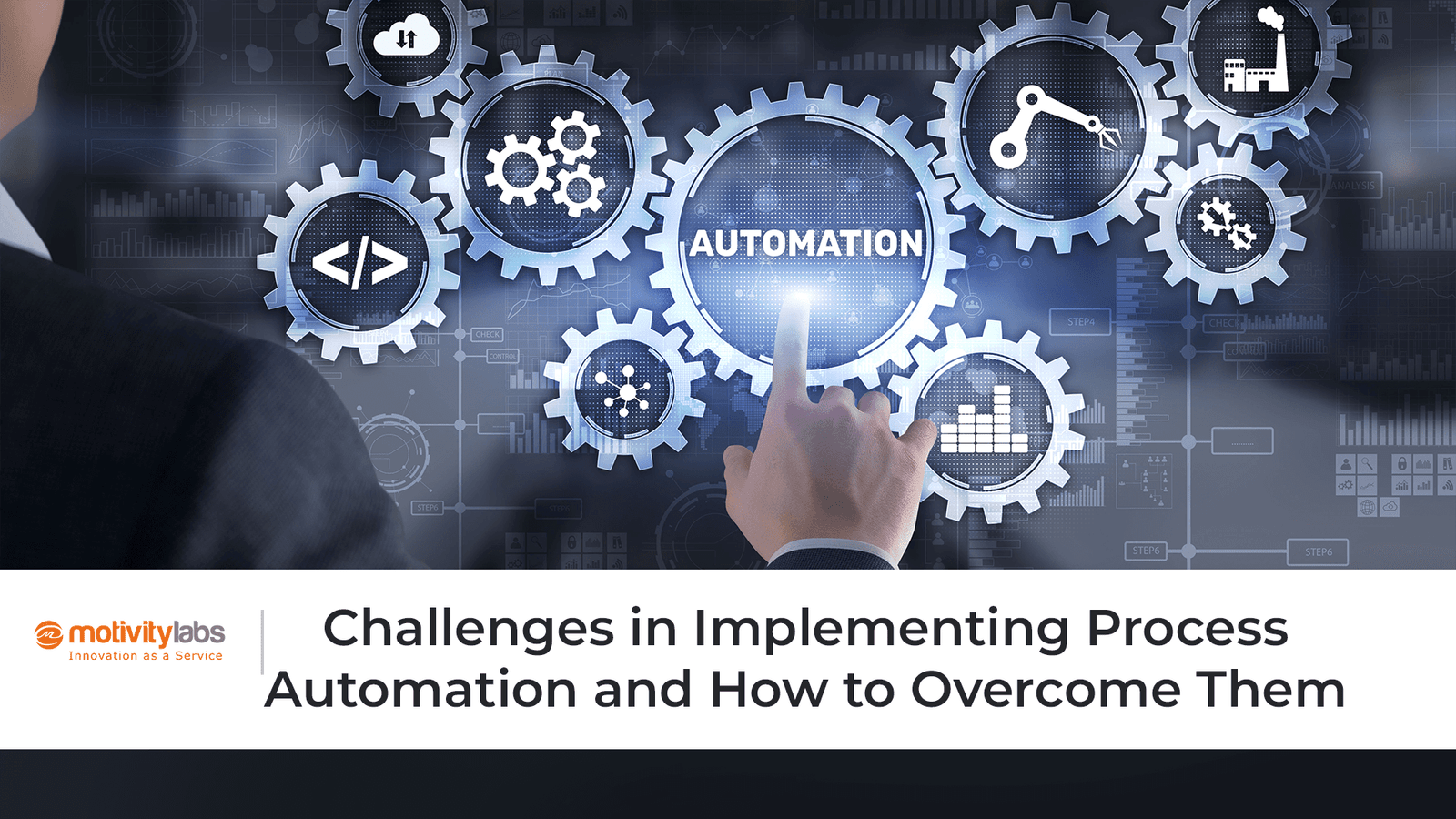In the digital-first world, where efficiency defines competitiveness, process automation is revolutionizing how businesses operate. Automation is crucial in streamlining back-office tasks, enhancing customer service, and enabling faster decision-making. It is a driving force behind greater agility, scalability, and productivity in modern businesses.
While the promise of process automation is compelling, the journey to achieving it can be daunting. From technological hurdles to human resistance, organizations often face various challenges that can delay progress or even derail automation efforts altogether. Fortunately, with the appropriate strategy, mindset, and tools, these challenges can be effectively addressed and overcome.
Read on to learn about the common pitfalls companies face when implementing process automation and how your organization can overcome them.
Challenge 1: Lack of Clear Goals and Business Alignment
One of the top reasons process automation initiatives fail is the absence of clear objectives. Many businesses initiate automation efforts without clearly defining the problems they aim to solve. This often results in fragmented initiatives, excessive spending, and limited return on investment.
How to Overcome It
Start with business alignment. Identify specific pain points: Is your team spending too much time on repetitive data entry? Are your customer service responses delayed due to manual handovers?
Define what success looks like—be it cost savings, time reduction, error minimization, or enhanced compliance. Then, align your automation roadmap with these goals. A targeted and prioritized approach helps you build a foundation that scales effectively.
Challenge 2: Employee Resistance to Change
Automation introduces change, and change can spark fear. Employees may be concerned about potential job displacement and the emergence of skill gaps. These concerns are often heightened when required to adapt to unfamiliar systems, especially if the transition to automation is sudden or poorly communicated.
How to Overcome It
Make employees partners, not spectators, in your process automation journey. Communicate the “why” clearly and often. Share how automation will remove drudgery, reduce stress, and let them focus on meaningful work.
It is essential to involve employees in the process design, provide practical training sessions, and ensure continuous support throughout the implementation. Employees who feel supported and included are significantly more likely to become advocates for automation within the organization.
Challenge 3: Automating the Wrong Processes
Trying to automate messy, variable, or infrequent processes can lead to complications and underwhelming outcomes. Not every procedure is immediately suitable for automation.
How to Overcome It
Prioritize processes that are:
- High-volume and repetitive
- Rules-based and predictable
- Stable with minimal exceptions
- Time-sensitive and prone to human error
Think: invoice approvals, employee onboarding, inventory checks, or service desk routing.
Conduct a process audit and use decision matrices to evaluate automation potential. Identifying the right processes to automate is equally as essential as choosing the suitable implementation methods in process automation.
Challenge 4: Integration with Legacy Systems
Many organizations depend on legacy systems not designed to support modern automation capabilities. These systems often lack application programming interfaces (APIs), operate on outdated architectures, or pose compatibility challenges. As a result, they contribute to the creation of data silos and fragmented workflows.
How to Overcome It
Organizations can leverage Robotic Process Automation (RPA) to interact with legacy systems without API access. RPA simulates human actions such as mouse clicks, keyboard inputs, and copy-and-paste functions, making it an effective alternative when direct integration is not feasible.
Organizations may also consider developing custom middleware or utilizing integration platforms that serve as a bridge between legacy systems and modern automation tools. A phased approach to modernization, when combined with process automation, supports long-term operational flexibility and scalability.
Challenge 5: Poor Data Quality and Accessibility
Automation is only as good as the data it relies on. Inconsistent, inaccurate, or siloed data can compromise process outcomes, leading to errors and poor decision-making.
How to Overcome It
Implement data governance policies before you scale automation. Ensure master data is clean, structured, and updated regularly.
Organizations should eliminate data silos by adopting centralized data platforms or cloud-based integration solutions. They should also implement processes that automatically validate and standardize data inputs to maintain accuracy and consistency. Your process automation tools will be far more effective when powered by high-quality data.
Challenge 6: Skill Shortages and Technical Complexity
Automation is not just plug-and-play. Successful process automation requires a range of skills. These include process mapping, tool configuration, workflow design, and system integration. However, not all of these capabilities may be available in-house.
How to Overcome It
Leverage automation partners or consultants who bring both domain expertise and technical proficiency. They can help with tool selection, architecture design, and implementation without burdening your internal teams.
At the same time, invest in training programs for your staff. Building a culture of automation literacy empowers teams to maintain and scale automation initiatives effectively.
Challenge 7: Weak Governance and Oversight
Without oversight, process automation efforts can quickly spiral out of control. Shadow automation (built without IT’s knowledge), lack of documentation, and inconsistent practices can lead to compliance issues and operational risks.
How to Overcome It
Establish an Automation Center of Excellence (CoE) to serve as a centralized team for process automation. This team is responsible for governing standards, maintaining best practices, and evaluating new use cases.
Track performance metrics, review process health, and audit automation logic regularly. Good governance ensures automation stays aligned with business goals, remains secure, and evolves strategically.
Challenge 8: Ignoring the Need for Continuous Optimization
Automating a process does not mean it is optimized forever. Businesses that treat process automation as a one-off project often overlook opportunities to enhance, expand, or evolve their workflows.
How to Overcome It
Make continuous improvement a core part of your automation culture. Use analytics to track usage, spot bottlenecks, and identify where intelligent automation (AI/ML) can improve outcomes. Conduct regular reviews, solicit user feedback, and experiment with enhancements that improve speed, accuracy, and adaptability.
Bonus Tip: Tool Overload and Fragmentation
In an attempt to stay current, some businesses adopt too many automation tools. These tools are often sourced from different vendors, leading to complexity and inefficiencies. This leads to fragmented workflows, integration issues, and overlapping functionalities.
How to Overcome It
Choose a unified or well-integrated automation platform to simplify your automation efforts. The platform should be capable of handling a range of use cases, from simple task automation to complex end-to-end process orchestration. Standardize your tool stack across departments to ensure compatibility and simplify management.



